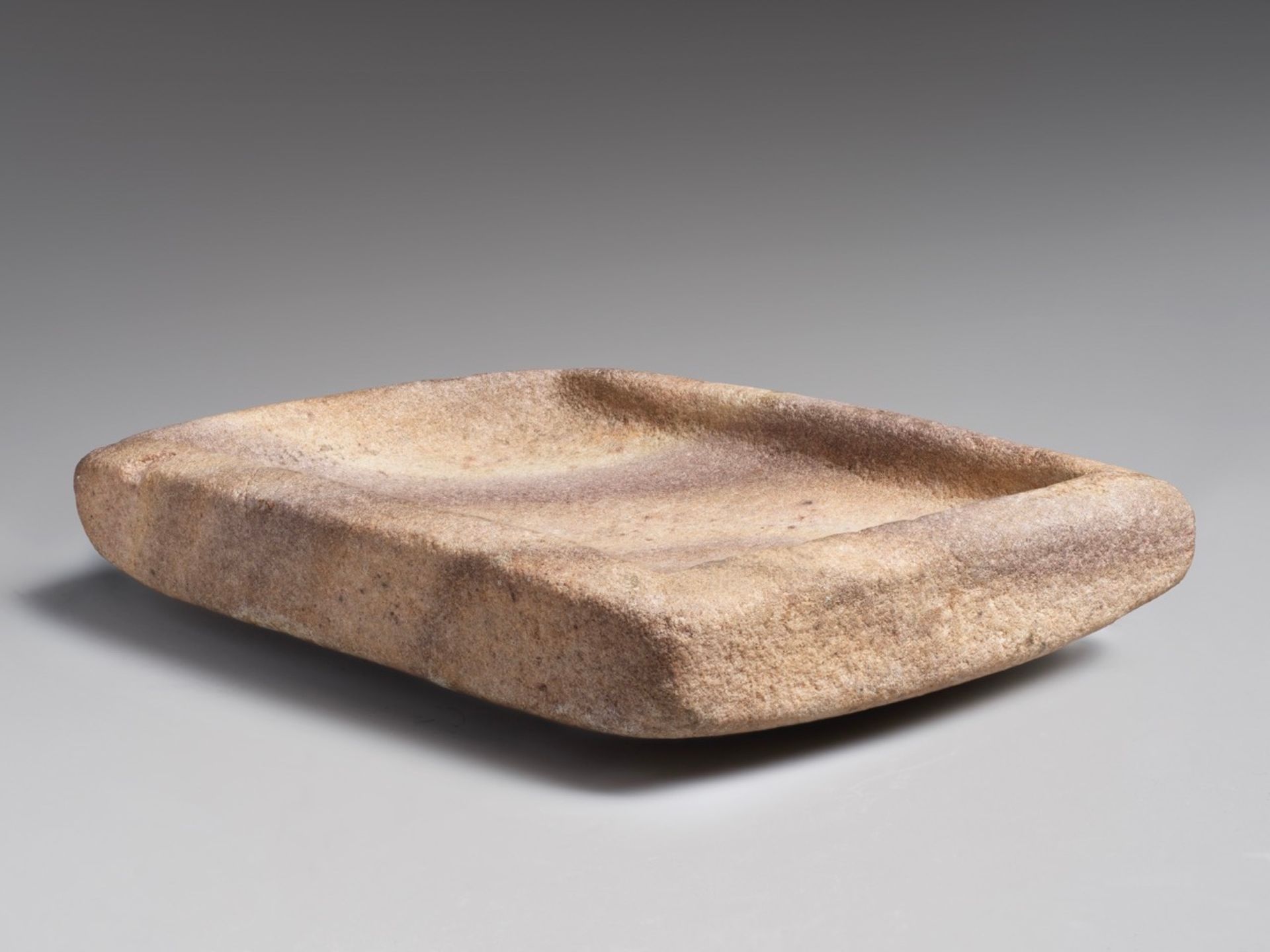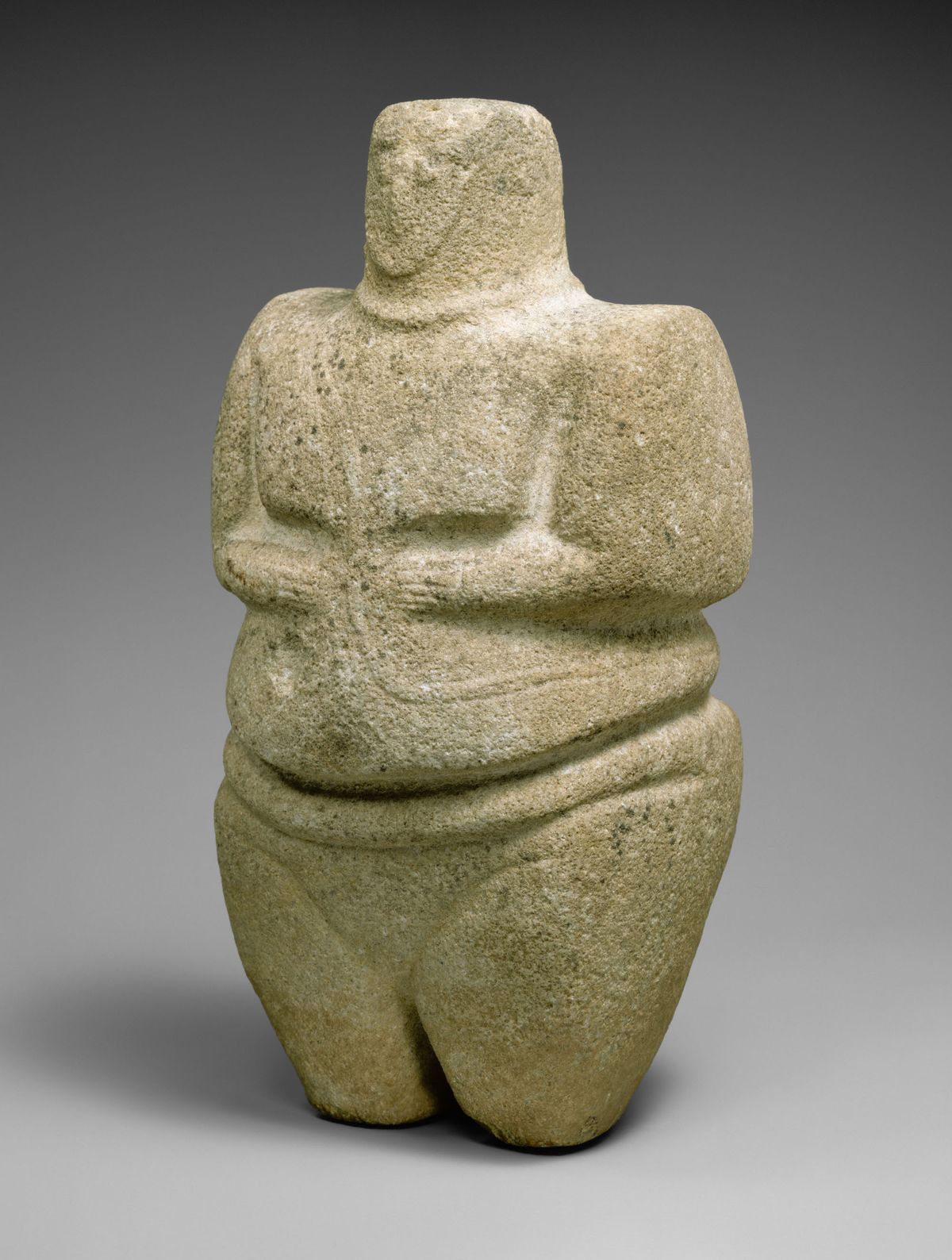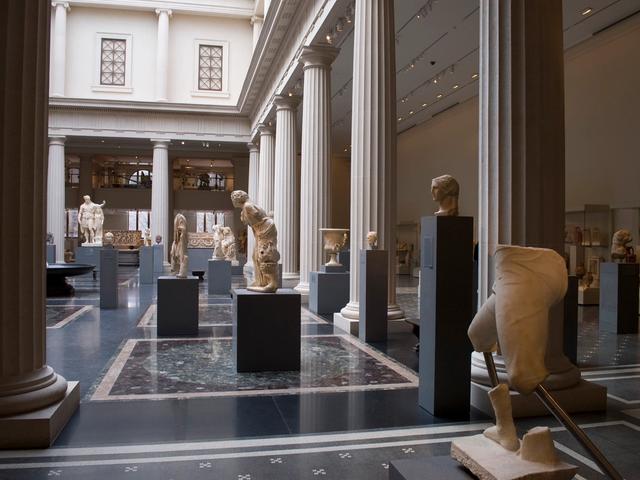Following extensive research into the provenance of two ancient stone works in its collection, New York’s Metropolitan Museum of Art has determined that they rightfully belong to Yemen. At the request of the Yemeni government—due to the country's ongoing civil war—the artefacts will remain at the Met as a loan and be “prominently displayed as the repatriated heritage of Yemen”, according to a museum press release. An official agreement-signing ceremony will take place on 22 September at the museum, presided over by Yemen's ambassador to the US and the US special envoy for Yemen.
The sculptures, both dating from the third millennium BC, are a sandstone statue of a standing female figure wearing a strap and a necklace (which the museum purchased in 1998) and a rectangular mortar made of marble (given to the Met as a gift in 1999). (The female figure may even be a pestle for the mortar; the museum is looking into it.) The Met’s new provenance research squad—formed earlier this year in response to the slew of artefacts in the museum’s collection discovered to have been looted—revealed that these two objects had been found near Marib in 1984 and “rightfully belong to the Republic of Yemen”.
Upon discovering the objects' history, the museum contacted the Yemeni embassy in Washington, DC, offering to return the objects, which lead to an agreement between the two entities that allows the Met to “care for and display the ancient stone works until Yemen wishes to have them returned”. (The agreement is similar to those Yemen recently signed with the Smithsonian Institution in DC and London’s Victoria and Albert Museum.)

Rectangular mortar, 3rd millennium BC Photo: Courtesy the Metropolitan Museum of Art
“These compelling objects offer an important opportunity to present Yemeni culture—in dialogue with our collection of 5,000 years of art history—to the Met’s audiences,” Max Hollein, the museum’s director and chief executive, said in a statement, adding that the museum looks forward to “working with the large Yemeni American community in New York City to host a celebration of our new collaboration later this fall”.
Mohammed Al-Hadhrami, Yemen's ambassador to the US, said that “due to the current situation in Yemen, it is not the appropriate time to return these artefacts back to our homeland. We are pleased to have these objects remain on loan with the Metropolitan Museum of Art in New York, one of the world's most prominent and prestigious cultural institutions.”



